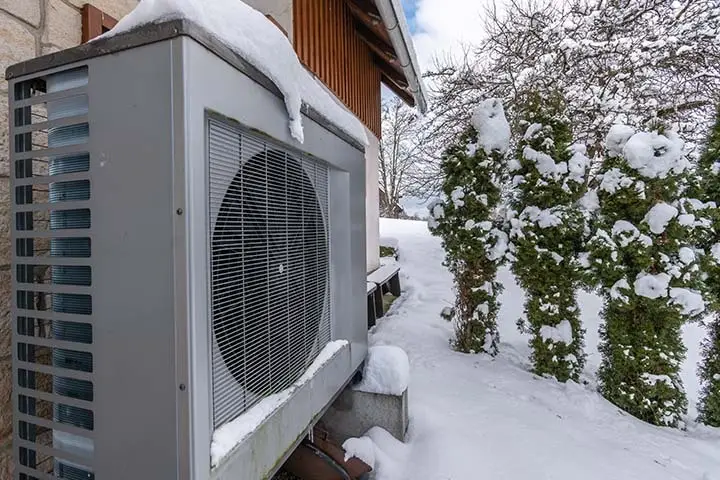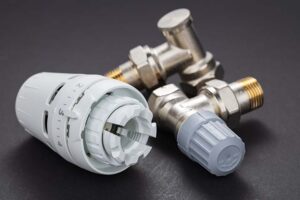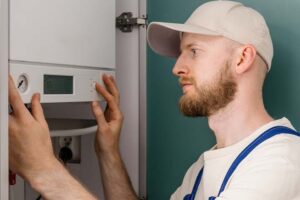Table of Contents
Air source warmth pumps (ASHPs) are becoming a popular preference amongst others for high-efficient heating. They use outdoor air to warm houses, decreasing reliance on fuel or oil. But many human beings are surprised: do air supply heat pumps work in cold climates?
The short answer is yes, however their performance can vary relying on the temperature, the type of pump, and the way the gadget is maintained. In this blog, we’ll discover how ASHPs function in cold climates, their demanding situations, and ways to enhance their typical overall performance.
How Air Source Heat Pumps Work?
An air source heat pump extracts heat from the outside doors and transfers it inside. It works further to a fridge but in opposite.
Even in cold weather, the air includes warmth. The pump captures this warmness and compresses it to elevate the temperature before distributing it internally.
Can Air Source Heat Pumps Handle Freezing Temperatures?
Many people assume that air source heat pumps stop working in winter. This is a myth. Modern ASHPs can function effectively even in freezing conditions.
Performance at Different Temperatures
- Light cold (above 32 ° F or 0 ° C): ASHP -er works effectively without much extra energy consumption.
- Medium cold (between 32 ° F to 14 ° F or 0 ° C to -10 ° C): The efficiency falls slightly, but the pump still provides reliable heat.
- Severe cold (below 14 ° F or below -10 ° C): Benefit, and the system may require extra support, such as heating or backup.
Some advanced Ashp -er designed for extreme climate can work less as -22 ° F (-30 ° C) at temperatures. These models use a boost refrigerant and better compressor technology to extract heat from very cold air.
Air Source Heat Pump Grants
Factors That Affect Performance in Cold Weather
Several factors influence how well an air source heat pump functions in winter.
1. Pump Efficiency and Technology
Older ASHP models may struggle in extreme cold. However, newer versions with inverter technology adjust their operation based on temperature, improving efficiency.
2. Defrost Cycle
The frost can be constructed on a frost outdoor unit in cold temperatures. Most ashp has a defrost function that melts ice and ensures smooth operation. This process temporarily reduces efficiency but prevents damage.
3. Home Insulation
A nicely insulated home keeps heat better. If the insulation is poor, Ashp will make the painting difficult and reduce efficiency. Ceiling intervals, lifting insulation and use of double glazed windows can help.
4. Sizing and Installation
The size of the warmth pump should suit the heating needs of the home. If the system is too small, it won’t offer sufficient heat. If it’s too big, it is able to cycle on and stale regularly, wasting electricity. Proper installation by using a professional guarantees premier overall performance.
5. Backup Heating Options
Some household owners use a hybrid system, combining ashps with gas boilers or electric ovens for extreme cold. It provides extra heat and keeps the energy cost low compared to being completely dependent on traditional heating.
Benefits of Air Source Heat Pumps in Cold Weather
Despite the challenges, air source heat pumps offer many advantages even in winter.
Energy Efficiency
ASHPs use energy to transfer heat in preference to generate it, making them extra green than conventional heating strategies. For each unit of strength used, they are able to produce up to 3 or four devices of warmth. This reduces overall energy consumption.
Lower Heating Costs
In many cases, ASHPs are cheaper to run than oil or electric heaters. While efficiency drops in very cold weather, they still use less energy than conventional systems.
Reduced Carbon Footprint
Since ASHPs rely on renewable heat from the air, they significantly cut carbon emissions.
All-in-One Heating and Cooling
Most ASHPs can also provide cooling in summer. Instead of installing separate air conditioning, a heat pump offers year-round comfort.
Challenges of Air Source Heat Pumps in Cold Climates
While ASHPs work in winter, they do face some difficulties.
Efficiency Drops in Extreme Cold
When temperatures drop under 14°F (-10°C), the device needs more electricity to function. This may boom strength use, leading to better payments.
Higher Upfront Costs
Installation can be pricey, starting from $10,000 to $20,000. However, many governments offer rebates and tax credits to offset costs.
Defrost Cycles Reduce Performance
Under icy conditions, ASHP automatically switches to defrost mode and reduces the heat output in an instant. This can lead to ups and downs in small temperatures.
Tips to Improve Air Source Heat Pump Performance in Cold Weather
To maximize efficiency and comfort, consider the following strategies.
Choose a Cold-Climate Heat Pump
Look for models specifically designed for freezing conditions. These units perform better and maintain efficiency in low temperatures.
Improve Home Insulation
Upgrading insulation reduces heat loss, allowing the ASHP to work more effectively. Check walls, windows, and doors for drafts.
Optimize Thermostat Settings
Setting the thermostat at a steady temperature rather than frequent adjustments helps the ASHP run more efficiently.
Regular Maintenance
Cleaning the filter, checking the cold level, and ensuring smooth operation to keep the outer unit free of ice and debris. A professional inspection once a year can also help detect problems.
Use a Hybrid Heating System
In extremely cold areas, an ashp pair with a backup heat heat source provides extra heat when needed.
Are Air Source Heat Pumps Worth It for Cold Weather?
For many house owners, ASHPs are a brilliant choice even in cold climate. They reduce power bills, lower carbon emissions, and provide dependable heating. However, their effectiveness relies upon on the weather, home insulation, and machine layout.
In moderate to reasonably bloodless regions, ASHPs work nicely on their very own. In extraordinarily bloodless regions, a hybrid system can be necessary to ensure steady warm temperature. With proper installation and preservation, they stay a fee-powerful and sustainable heating solution.
Conclusion
So, does air supply warmness pumps paintings in a bloodless climate? Yes, they do! While their efficiency may also drop in extreme bloodlessness, current ASHPs are designed to function even in freezing temperatures.
Investing inside the right version, enhancing insulation, and following satisfactory practices can help owners experience energy-green heating all wintry weather long.
If you are considering the air supply heating pump for your home, you can contact a specialist to detect a nice tool for your requirements. With the correct layout, you can remain warm when you save cash and reduce your carbon footprint.
Frequently Asked Questions
Converting from an existing or electrical system would be very expensive. It can typically cost you thousands of pounds. Nevertheless, if you are eligible for an ECO4 grant, you could potentially get it installed and not pay anything.
Gas is still more economical to use than electricity in 2025. However, sometimes electricity is more efficient overall when you consider the costs of maintenance and high-tech controls on the heating system.
You can cut the price of your system by turning down your thermostat, using smart controls on your system, and insulating your home. You can claim ECO4 grants to replace your system for free.



